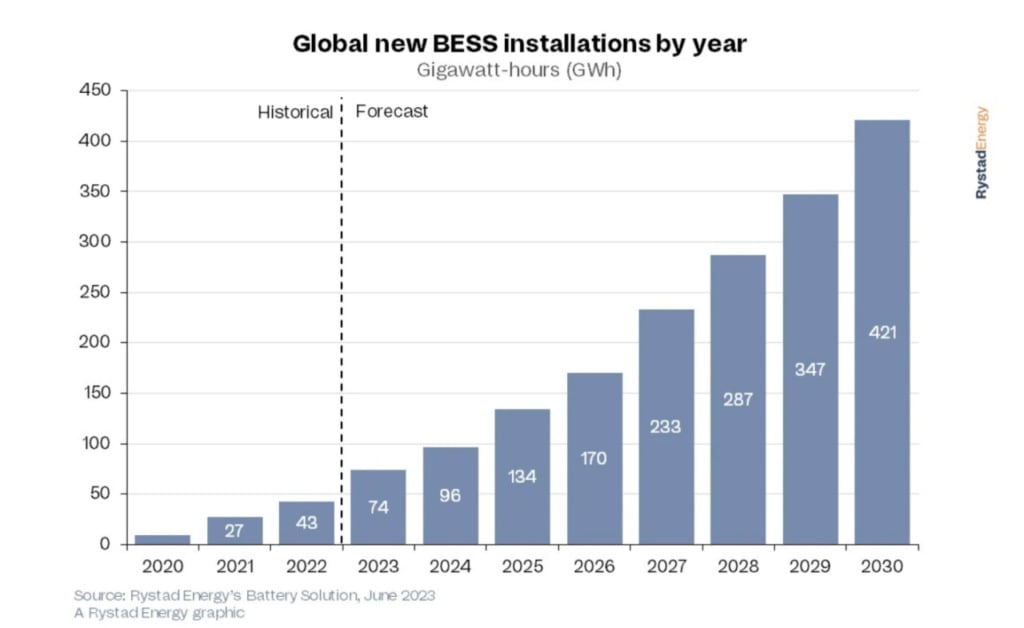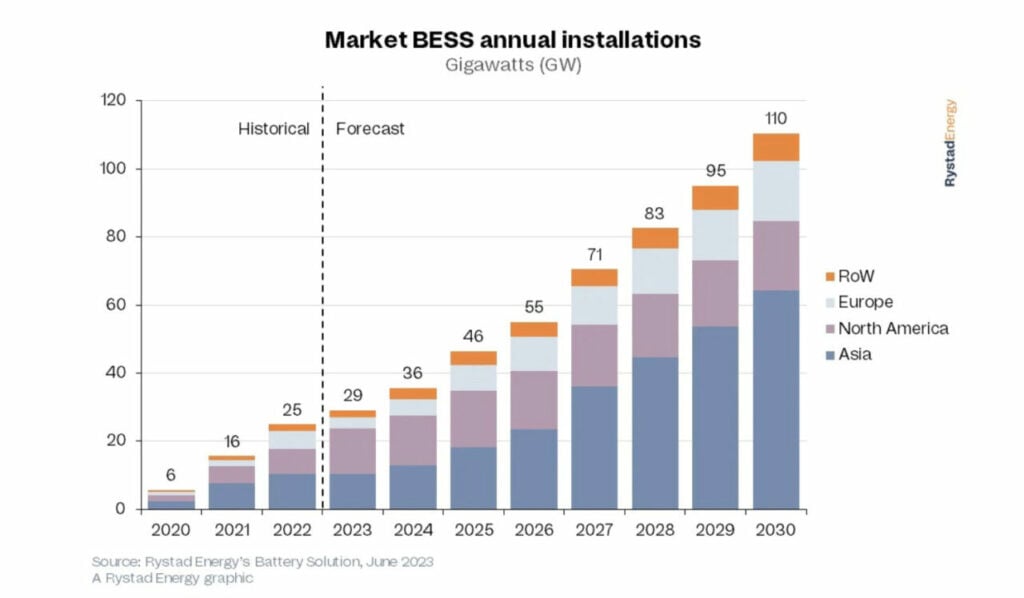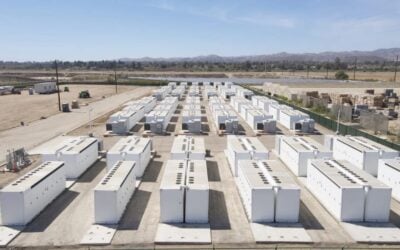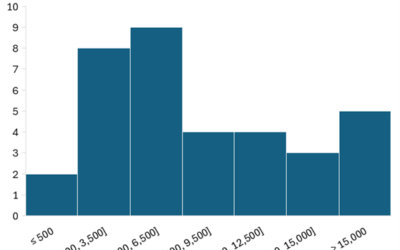
Annual battery energy storage system (BESS) installations will grow by 10x between 2022 and 2030, according to research firm Rystad Energy.
Rystad expects annual BESS deployments to grow by an average CAGR of 33% between 2022 and 2030, across all market segments including residential, commercial and grid-scale. From 43GWh of deployments last year, the firm is anticipating some 421GWh of new capacity to come online in 2030. In MW terms, 2030 will see 110GW deployed, indicating Rystad thinks average durations will reach close to four hours.
Enjoy 12 months of exclusive analysis
- Regular insight and analysis of the industry’s biggest developments
- In-depth interviews with the industry’s leading figures
- Annual digital subscription to the PV Tech Power journal
- Discounts on Solar Media’s portfolio of events, in-person and virtual
Growth this year is expected to be much higher, at 72% year-on-year, with 73GWh deployed versus 43GWh last year, Rystad said. It attributed this to cost reductions for BESS, national funding and incentive programmes in the US and Europe, and strong capacity expansion in China.
BESS can play a wide variety of roles. In the case of residential and commercial systems, the technology is mainly used to optimise energy use, while grid-scale systems today typically provide grid balancing services to grid operators, balance peaks and troughs in energy prices by trading in the electricity market, and provide capacity under agreements as with other renewables like solar and wind.
In the future, BESS will play an increasing role as a transmission asset. The largest BESS integrator globally Fluence has made this a strategic focus recently.
Rystad also broke down BESS installations by region in the graphic below. While North America is currently the largest single region and will be for a few years, Rystad expects Asia to overtake it by the end.

As Rystad mentioned, part of the steady pickup in deployments this year is thanks to falls in the cost compared to last year. The increase in BESS costs last year was well-documented by Energy-Storage.news, with one industry leader telling us that the cost base had grown 25% year-on-year, driven by battery cells.
Another research outlet BloombergNEF said that BESS costs have fallen by 2% in the last six months, in a note published last week (7 June). It attributed half of the fall in cost to a steady decline in the price of lithium carbonate from all-time highs last year.
Energy-Storage.news’ publisher Solar Media will host the 1st Energy Storage Summit Asia, 11-12 July 2023 in Singapore. The event will help give clarity on this nascent, yet quickly growing market, bringing together a community of credible independent generators, policymakers, banks, funds, off-takers and technology providers. For more information, go to the website.






